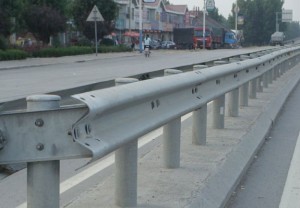Crash beams, also identified as guardrails or crash limitations, are designed to absorb and redirect the power of a automobile impression, thereby preventing the vehicle from leaving the roadway and probably inflicting more significant damage, accidents, or fatalities. The functioning of crash beams includes a quantity of key ideas:
1. Energy Absorption:
Deformation: Crash beams are often designed to deform or crumple upon influence. This deformation absorbs kinetic vitality from the transferring vehicle, slowing it down progressively quite than abruptly.
Material Selection: Crash beams are usually made from supplies that may take in influence energy effectively. https://perimetersecuritypartners.com/our-products/crash-beams/ and concrete are common materials used for crash obstacles because of their energy and ability to deform in a managed manner.
2. Redirection of the Vehicle:
Slope and Shape: Crash beams are sometimes put in at a slight angle or curve. When a automobile impacts the barrier, this slope and form help redirect the automobile again onto the highway, preventing it from overturning or veering off right into a extra dangerous space.
End Treatments: The ends of crash beams are equipped with specialised terminals or end therapies designed to soak up impact vitality and redirect the car away from the barrier or different obstacles. These finish remedies can include crash cushions, guardrail finish terminals, or energy-absorbing materials.
three. Anchorages and Stability:
Sturdy Installation: Crash beams are securely anchored to the bottom or other structures to ensure stability. Proper set up and anchorage stop the barrier from collapsing upon impact, sustaining its effectiveness in stopping car intrusion.
4. High Visibility and Signage:
Reflective Markings: Crash beams are often outfitted with reflective supplies or markings to enhance visibility, particularly during low-light conditions. High visibility ensures that drivers can see the barrier from a distance, allowing them to react and keep away from collisions if potential.
Warning Signs: Warning signs indicating the presence of crash obstacles are placed along the roadway to alert drivers in advance, giving them time to adjust their speed and driving conduct.

5. Maintenance and Repairs:
Regular Inspections: Crash beams require common inspections to verify for signs of wear and tear, injury, or corrosion. Inspections be sure that the barrier remains structurally sound and capable of performing its supposed operate.
Timely Repairs: Damaged or worn-out sections of crash obstacles need to be repaired or changed promptly to take care of their effectiveness. Proper repairs be positive that the barrier can proceed to soak up power during an impression.
In summary, crash beams work by absorbing and dissipating the power of a automobile impression, redirecting the car away from dangerous areas, and preventing it from leaving the roadway. Proper design, installation, and maintenance are essential to ensure crash barriers operate successfully and contribute to highway safety..
